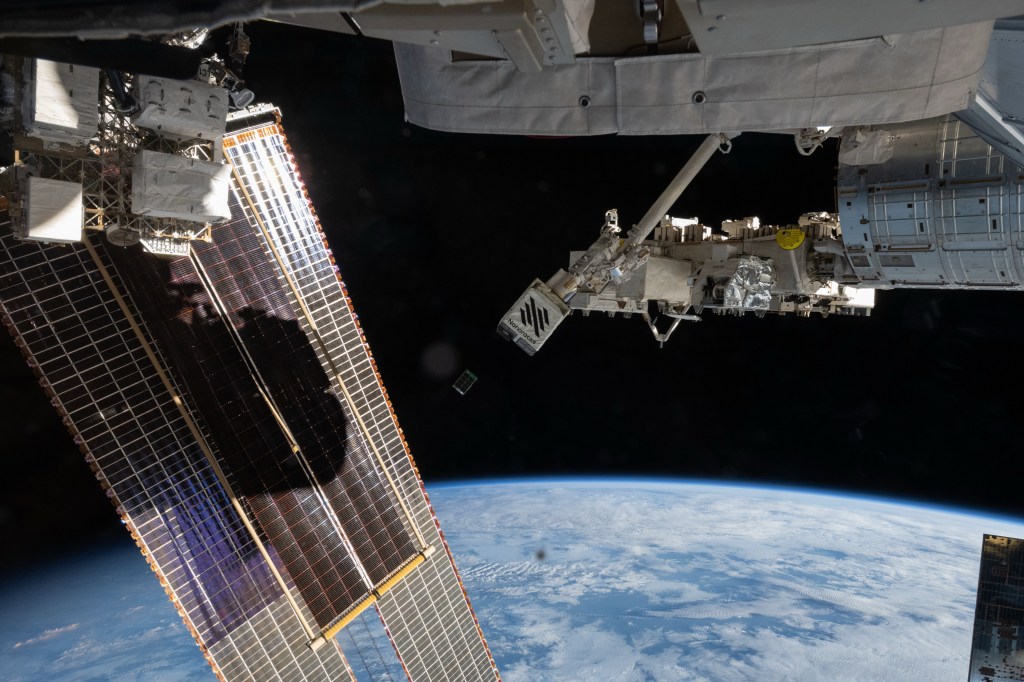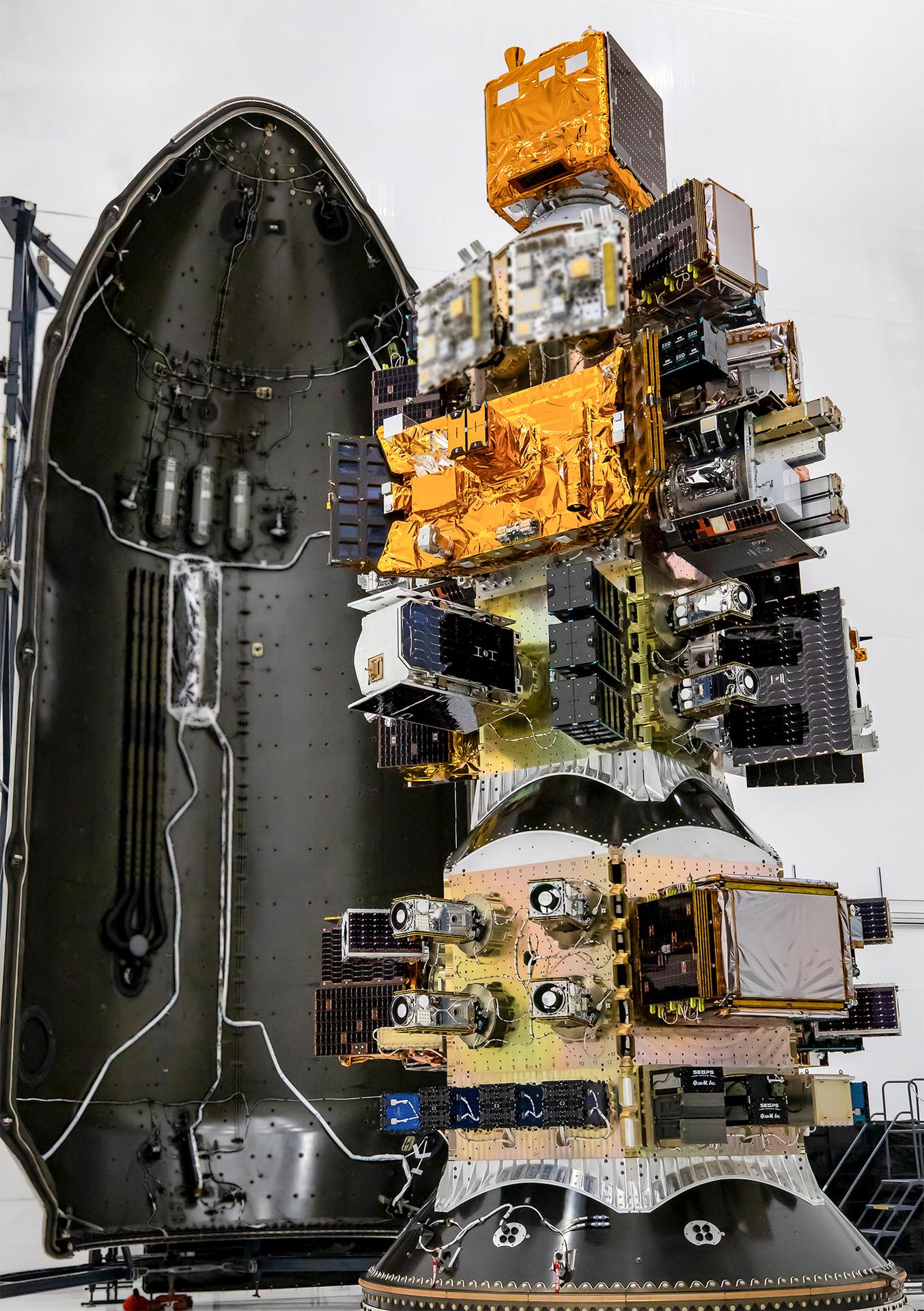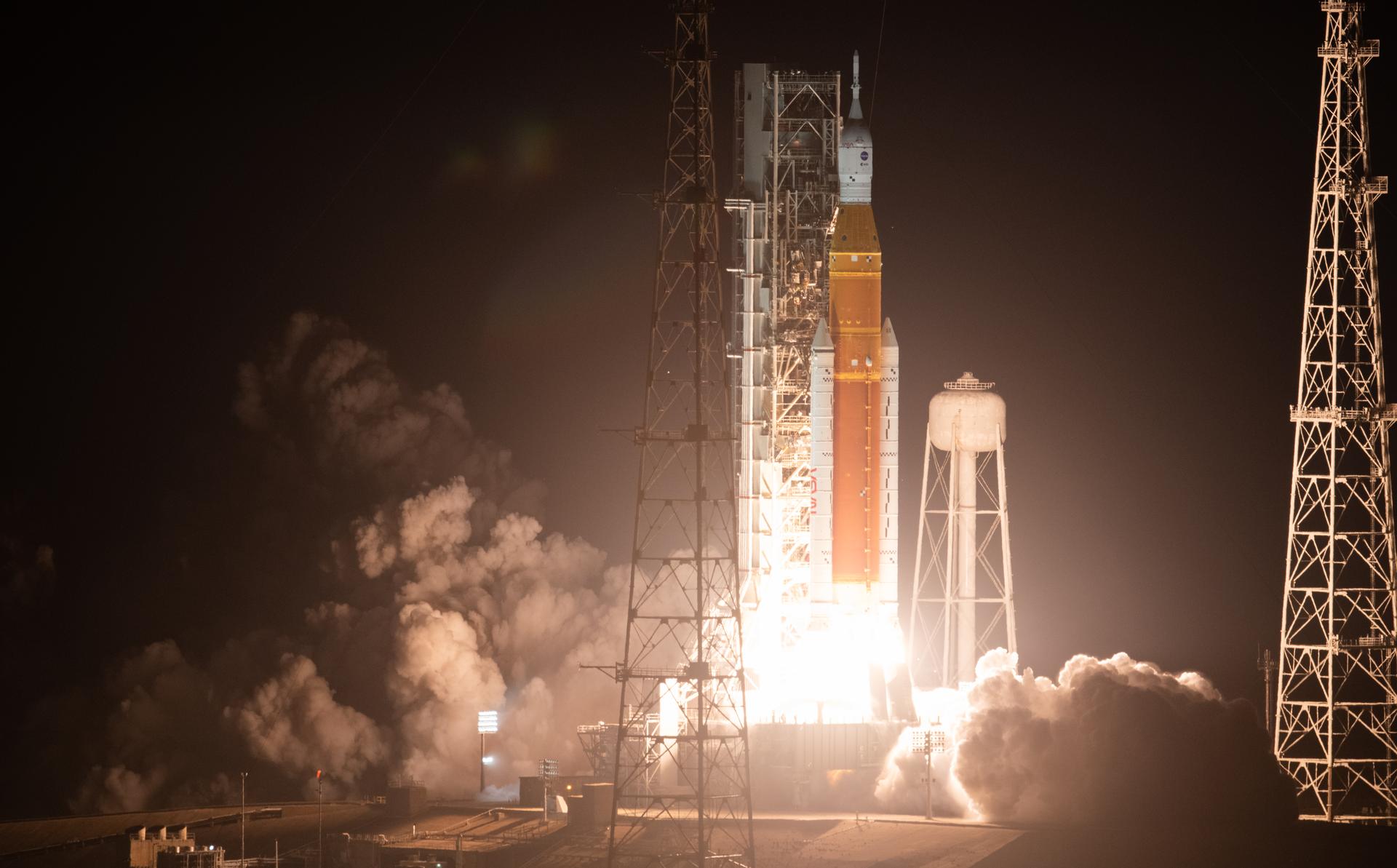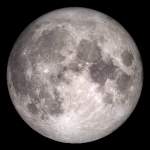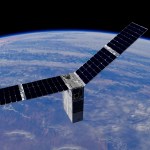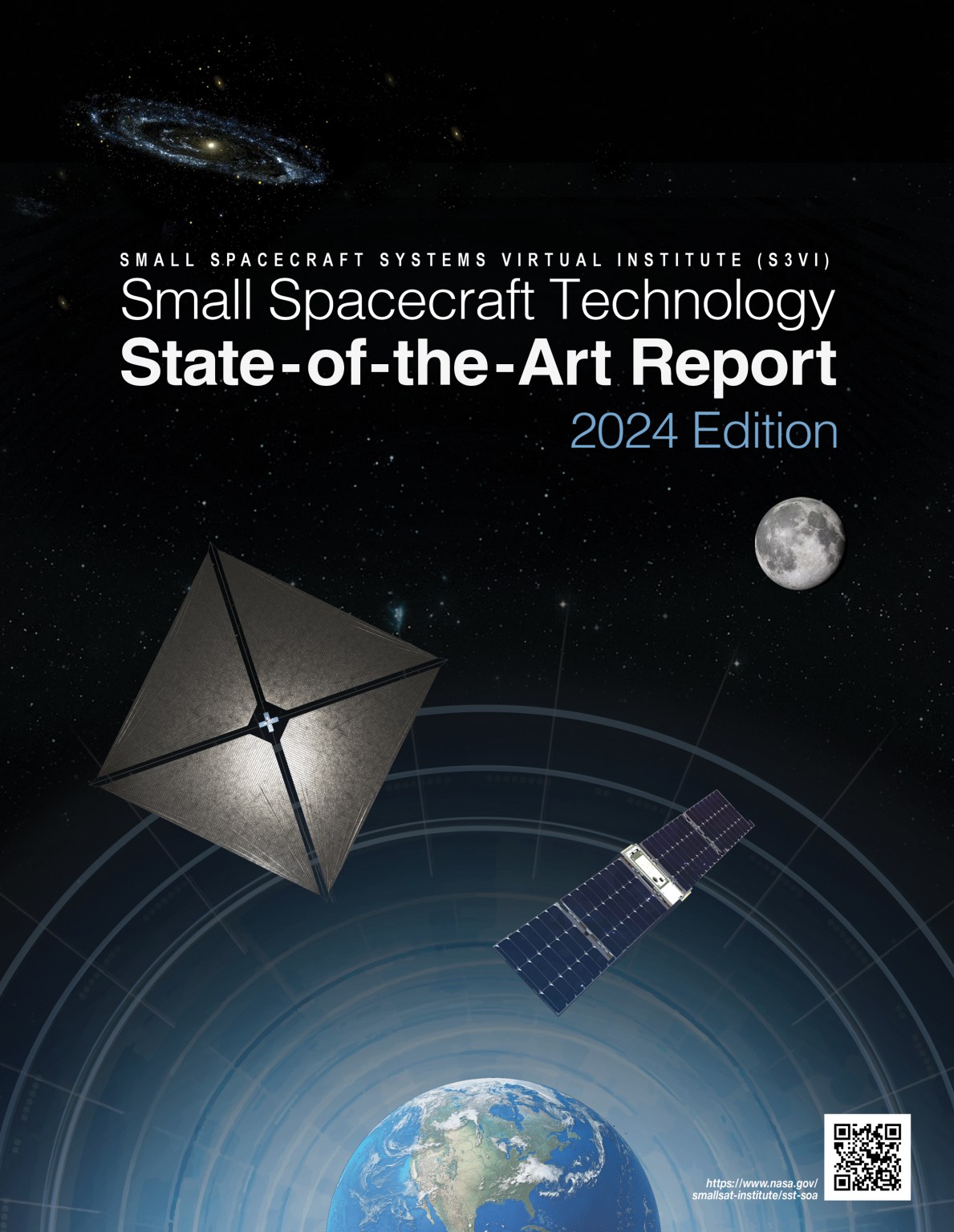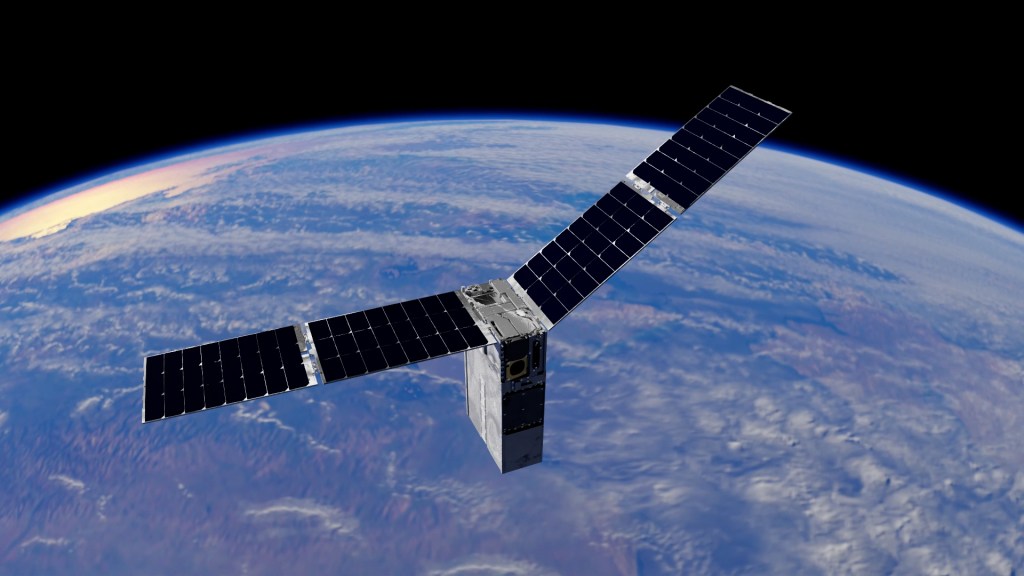
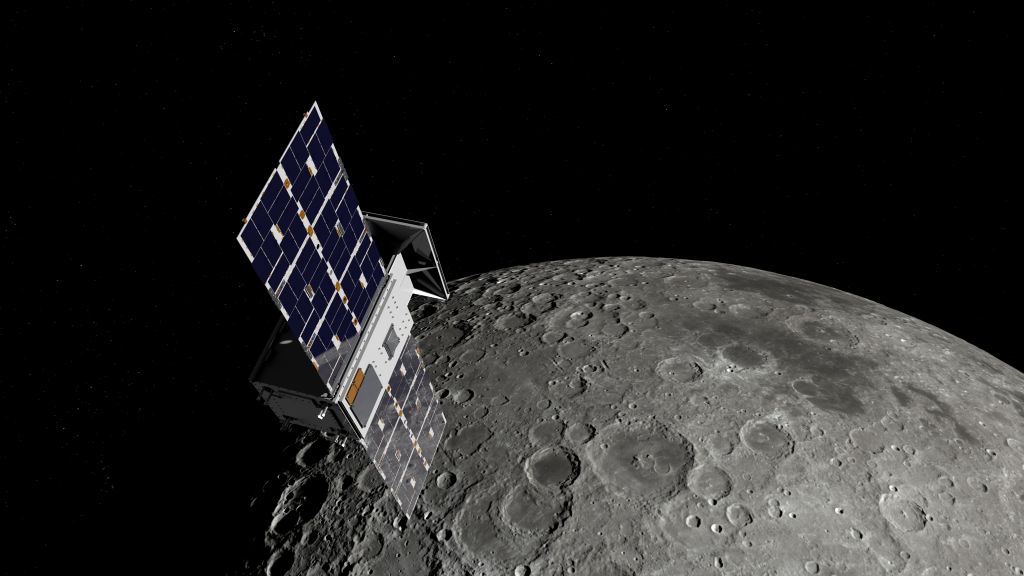
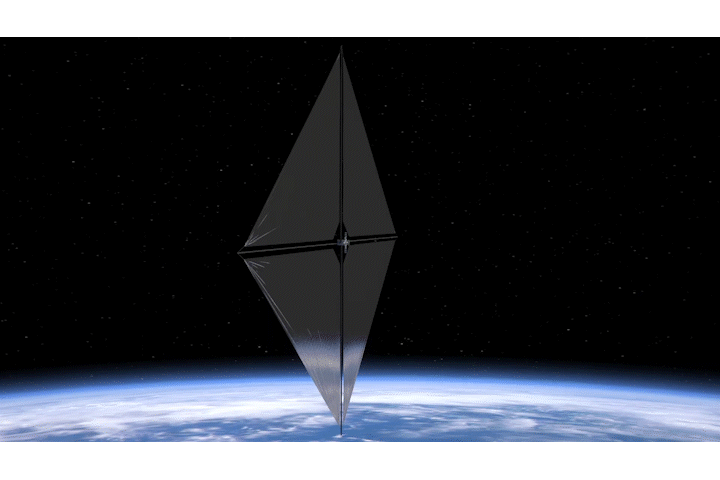
Small Spacecraft & Distributed Systems
The Small Spacecraft & Distributed Systems (SSDS) program within NASA’s Space Technology Mission Directorate, expands the ability to execute unique missions through rapid development and demonstration of capabilities for small spacecraft applicable to exploration, science and the commercial space sector.
Latest Small Spacecraft News
Iconic ✨
Our Starling mission was honored with a 2025 SpaceNews Icon Award for Innovative Technology for its work advancing cooperative space systems.
Since launching to low Earth orbit in July 2023, the four CubeSats have flown, communicated, and shared information with limited involvement from ground teams. They’ve demonstrated autonomous navigation, coordination with other satellites to improve traffic in orbit, and collected multi-point science data as a swarm of small spacecraft.
Congratulations, Starling team!
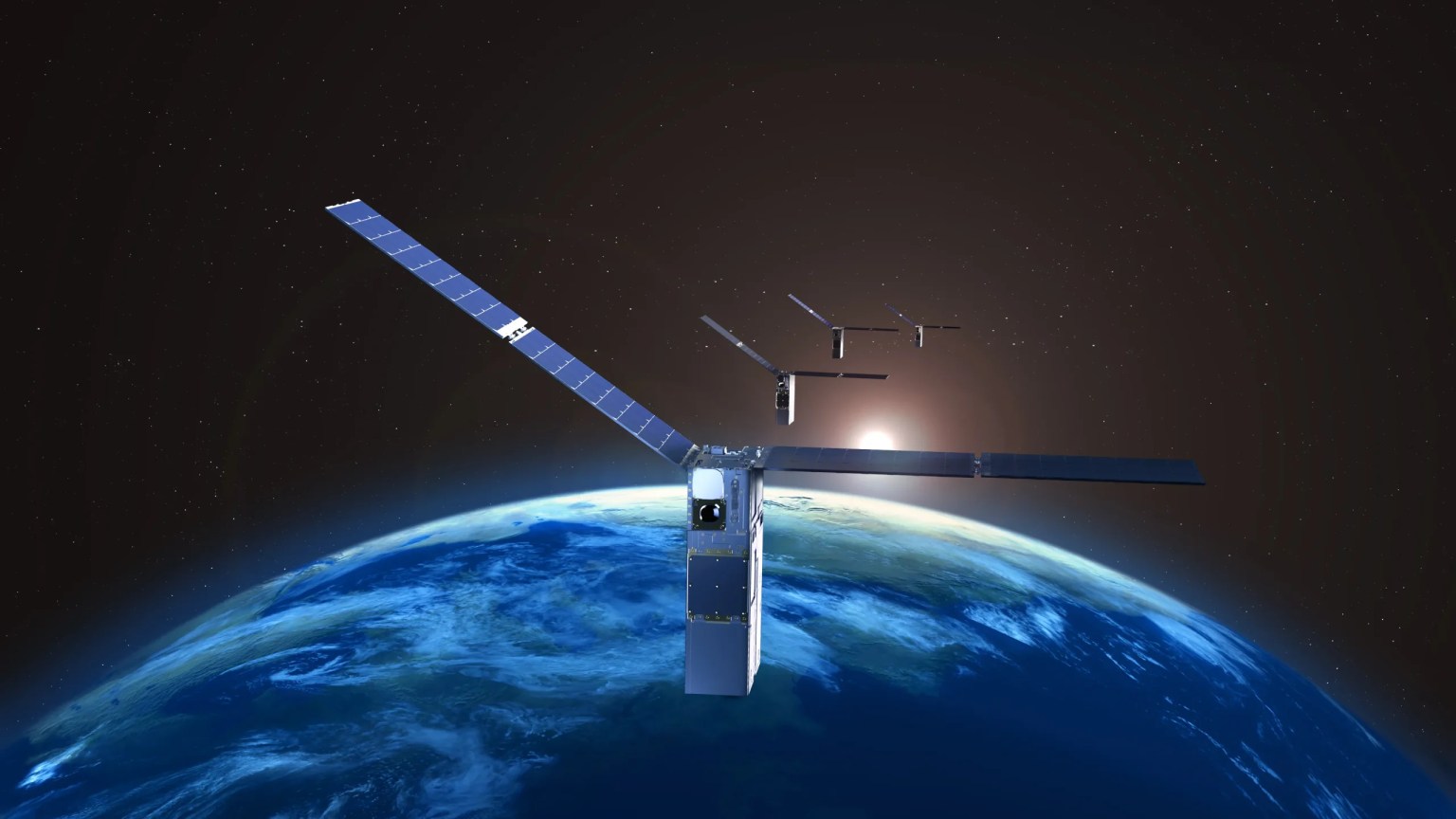
Setting Sail to Travel Through Space:
5 Things to Know about our New Mission
1. Sailing on Sunshine
Solar sails use the pressure of sunlight for propulsion much like sailboats harness the wind, eliminating the need for rocket fuel after the spacecraft has launched. If all goes according to plan, this technology demonstration will help us test how the solar sail shape and design work in different orbits.
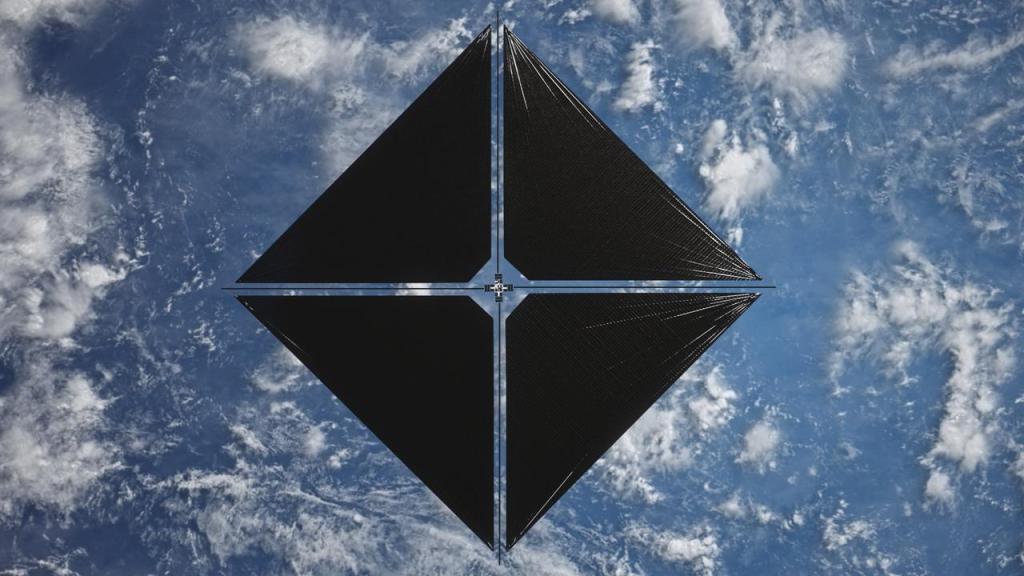
2. Small Package, Big Impact
The Advanced Composite Solar Sail System spacecraft is a CubeSat the size of a microwave, but when the package inside is fully unfurled, it will measure about 860 square feet (80 square meters) which is about the size of six parking spots. Once fully deployed, it will be the biggest, functional solar sail system – capable of controlled propulsion maneuvers – to be tested in space
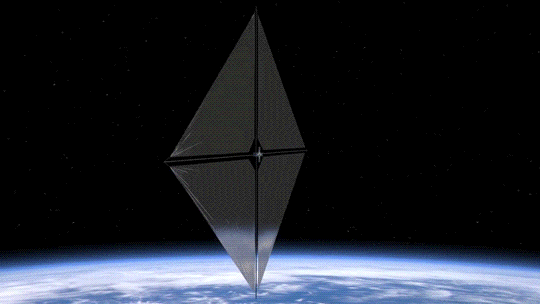
3. Second NASA Solar Sail in Space
If successful, the Advanced Composite Solar Sail System will be the second NASA solar sail to deploy in space, and not only will it be much larger, but this system will also test navigation capabilities to change the spacecraft’s orbit. This will help us gather data for future missions with even larger sails.
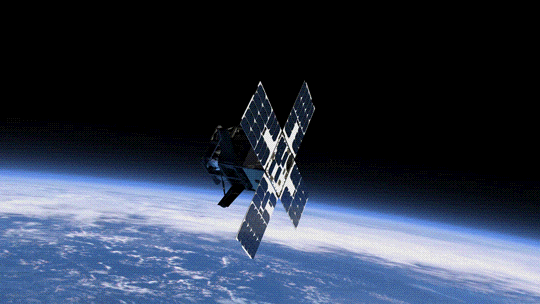
4. BOOM: Stronger, Lighter Booms
Just like a sailboat mast supports its cloth sails, a solar sail has support beams called booms that provide structure. The Advanced Composite Solar Sail System mission’s primary objective is to deploy a new type of boom. These booms are made from flexible polymer and carbon fiber materials that are stiffer and 75% lighter than previous boom designs. They can also be flattened and rolled like a tape measure. Two booms spanning the diagonal of the square (23 feet or about 7 meters in length) could be rolled up and fit into the palm of your hand!
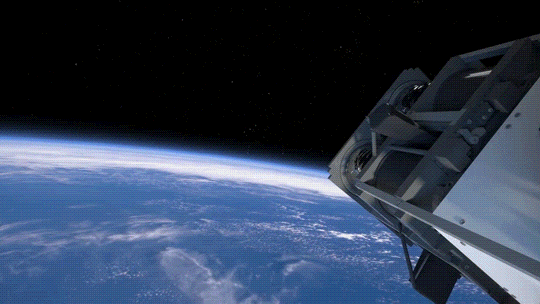
5. It’s a bird…it’s a plane…it’s our solar sail!
About one to two months after launch, the Advanced Composite Solar Sail System spacecraft will deploy its booms and unfurl its solar sail. Because of its large size and reflective material, the spacecraft may be visible from Earth with the naked eye if the lighting conditions and orientation are just right!
To learn more about this mission that will inform future space travel and expand our understanding of our Sun and solar system, visit https://www.nasa.gov/mission/acs3/.
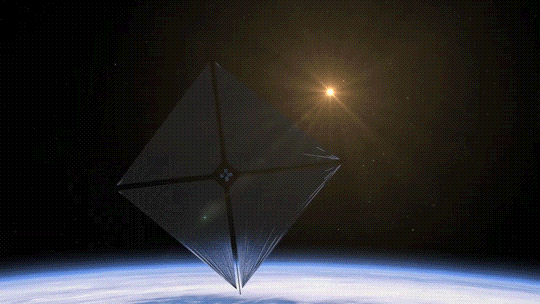
Technology Demonstrations
Current Missions
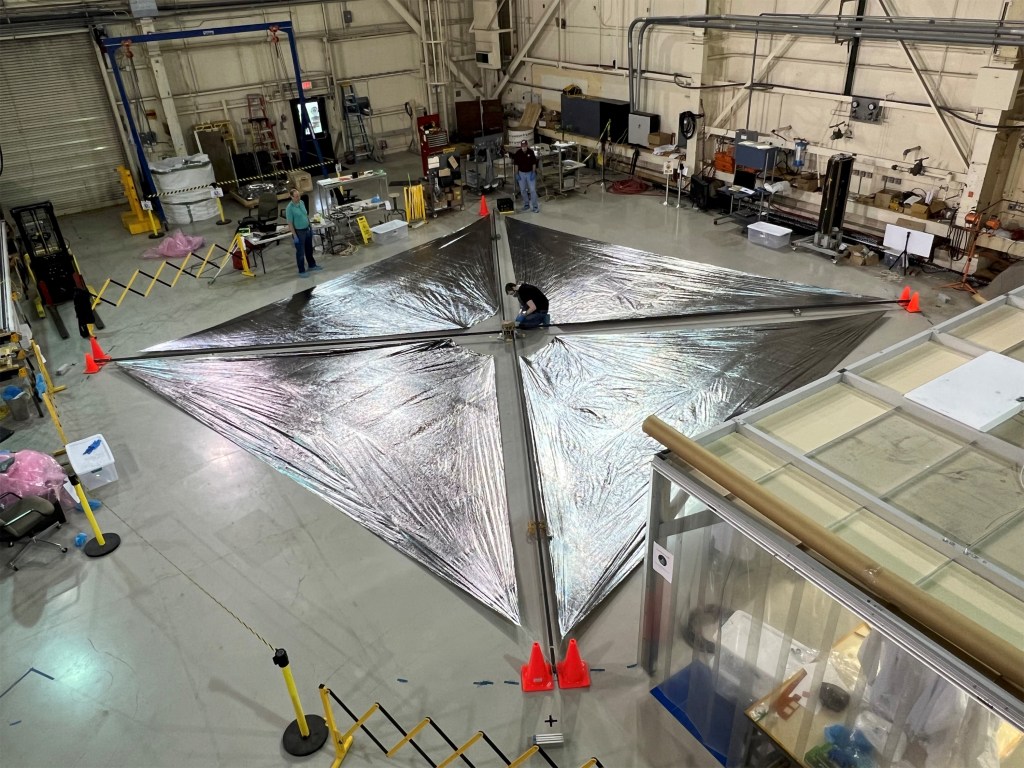
Advanced Composite Solar Sail System
NASA is developing new deployable structures and materials technologies for solar sail propulsion systems destined for future low-cost deep space missions. The mission uses composite materials in its novel, lightweight booms that deploy from a CubeSat. ACS3 launched on April 23, 2024, aboard a Rocket Lab Electron rocket from the company’s Launch Complex 1 in Māhia, New Zealand.

CAPSTONE
A microwave oven–sized CubeSat weighing just 55 pounds is the first spacecraft to test a unique, elliptical lunar orbit as part of NASA’s CAPSTONE mission. Owned and operated by Advanced Space, CAPSTONE launched on June 28, 2022, aboard a Rocket Lab Electron rocket from the company’s Launch Complex 1 in New Zealand. The CAPSTONE spacecraft entered lunar orbit on Nov. 13, 2022.
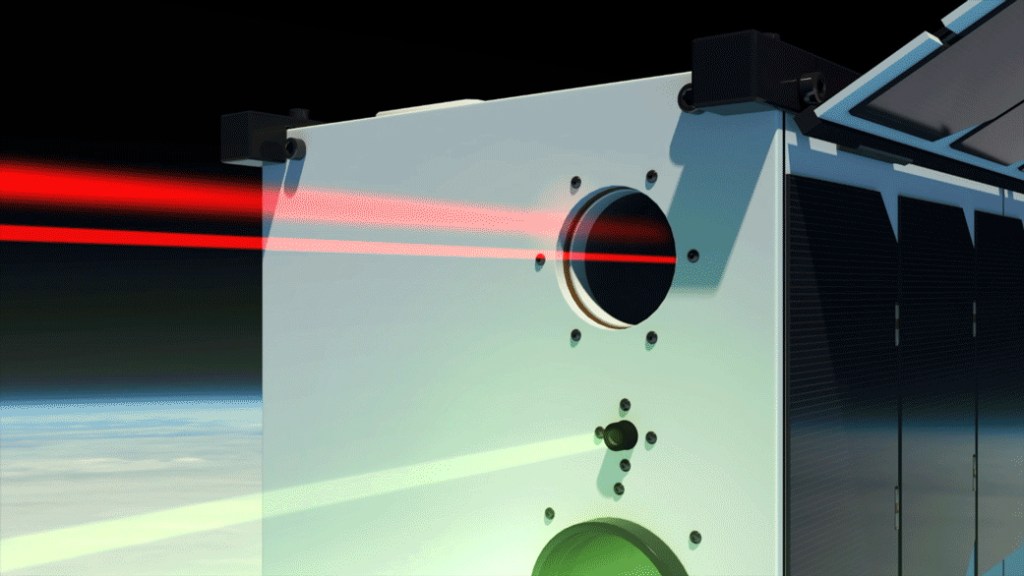
CubeSat Laser Infrared CrosslinK
The CLICK mission will demonstrate technology to advance the state of the art in communications between small spacecraft as well as the capability to gauge their relative distance and location. CLICK is comprised of two sequential missions. CLICK A launched on July 14, 2022 aboard SpaceX's 25th Commercial Resupply Service (CRS-25) mission to the International Space Station. The CLICK B/C launch is anticipated no earlier than the second quarter of 2026.
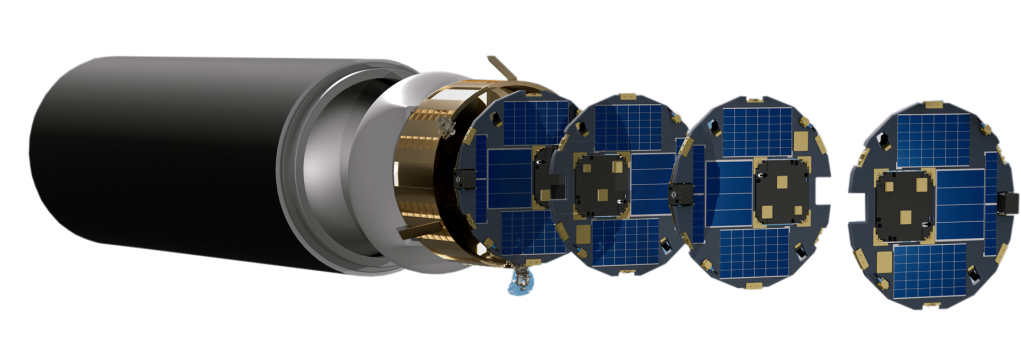
DiskSat
NASA is funding designers of small spacecraft at The Aerospace Corporation in El Segundo, California, to develop a technology demonstration of an evolutionary alternative to the CubeSat standard that maintains the benefits of that platform while overcoming key limitations. DiskSat is a plate-shaped satellite 40 inches in diameter and an inch thick that could offer more power and surface area for instruments, providing more opportunities for NASA to expand upon target mission objectives for small spacecraft. This first DiskSat demonstration mission launched at 12:03 a.m. EST on Thursday, Dec. 18, aboard a Rocket Lab Electron rocket from the company’s Launch Complex 2 on Wallops Island, Virginia.
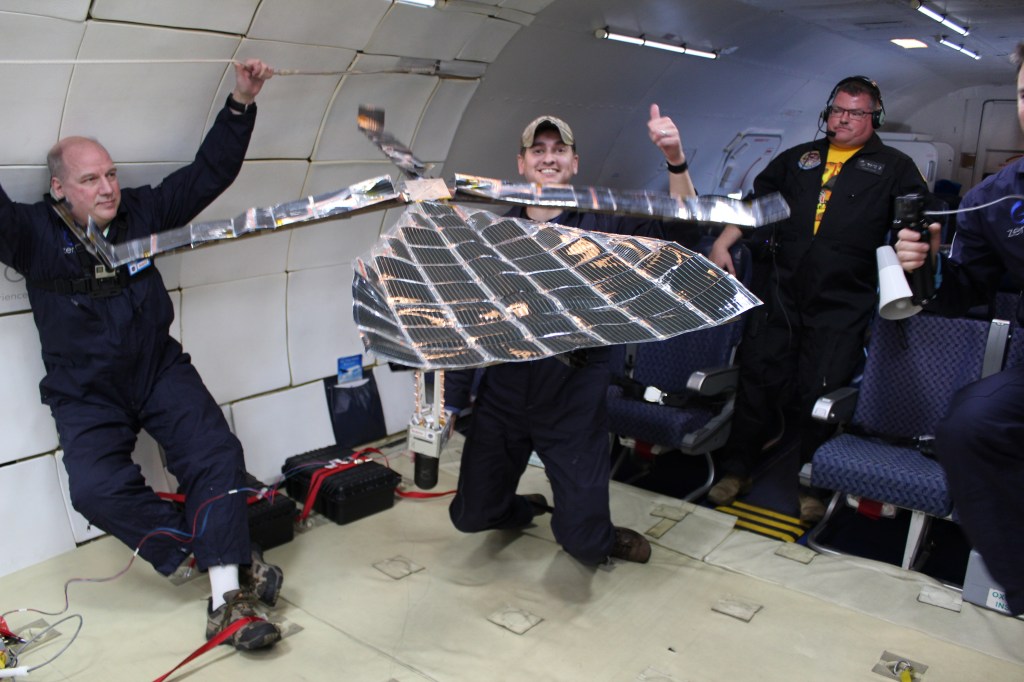
Pathfinder Technology Demonstrator
This series of technology demonstrations will benefit future missions by demonstrating the operation of new subsystem technologies on orbit. These include propulsion systems that provide the capability to maneuver small science platforms; novel technologies to generate more electrical power for deep space small spacecraft missions; and laser communications systems that will greatly increase the amount of data that can be transmitted from the spacecraft to the ground. On August 16, PTD-4 and PTD-R launched on SpaceX’s Transporter-11 mission from Space Launch Complex 4E at Vandenberg Space Force Base in California.
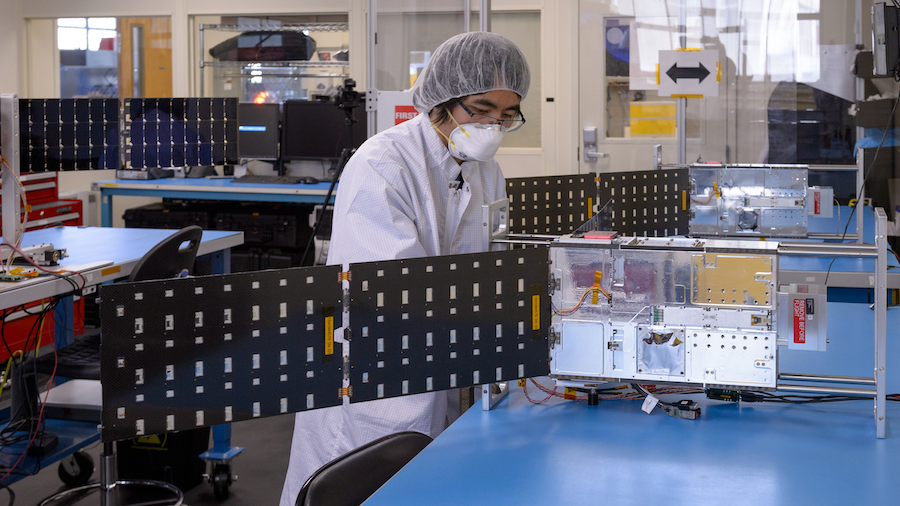
Starling
NASA’s Starling mission is advancing the readiness of various technologies for cooperative groups of spacecraft – also known as distributed missions, clusters, or swarms. Starling is demonstrating technologies to enable multipoint science data collection by several small spacecraft flying in swarms. The mission uses four CubeSats in low-Earth orbit to test four technologies that let spacecraft operate in a synchronized manner without resources from the ground. Starling launched July 17, 2023 from Rocket Lab Launch Complex 1 in New Zealand.
Work With Us
Learn More about Work With Us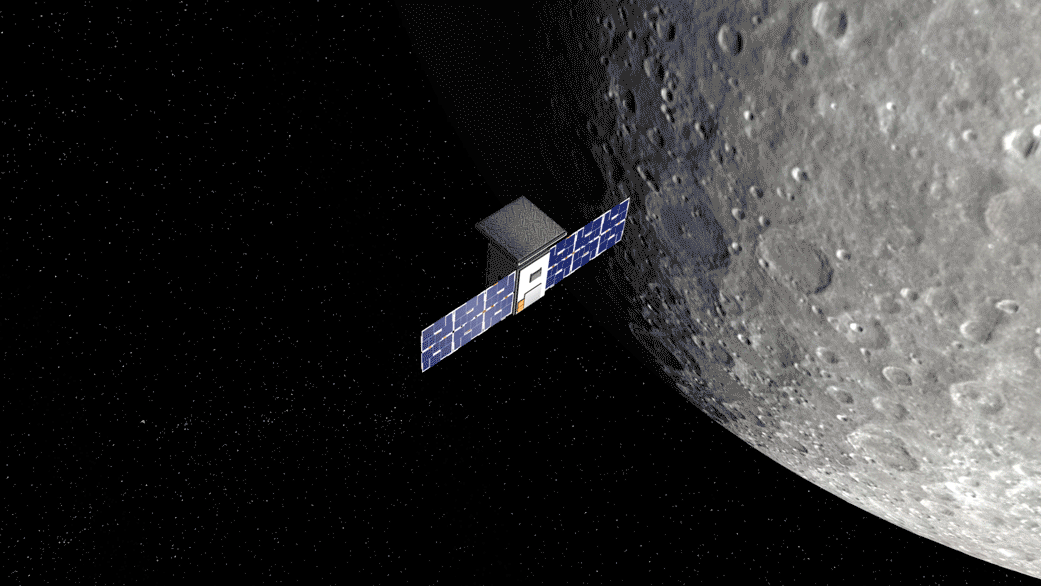
Resources
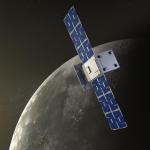
SST Guidebook for Technology Development Projects
The guidebook is a collection of recommended practices and ready references to expedite research and technology development projects. It offers guidance for efficiency, best practices and improved success based on SST and NASA experience and SST policies.




























